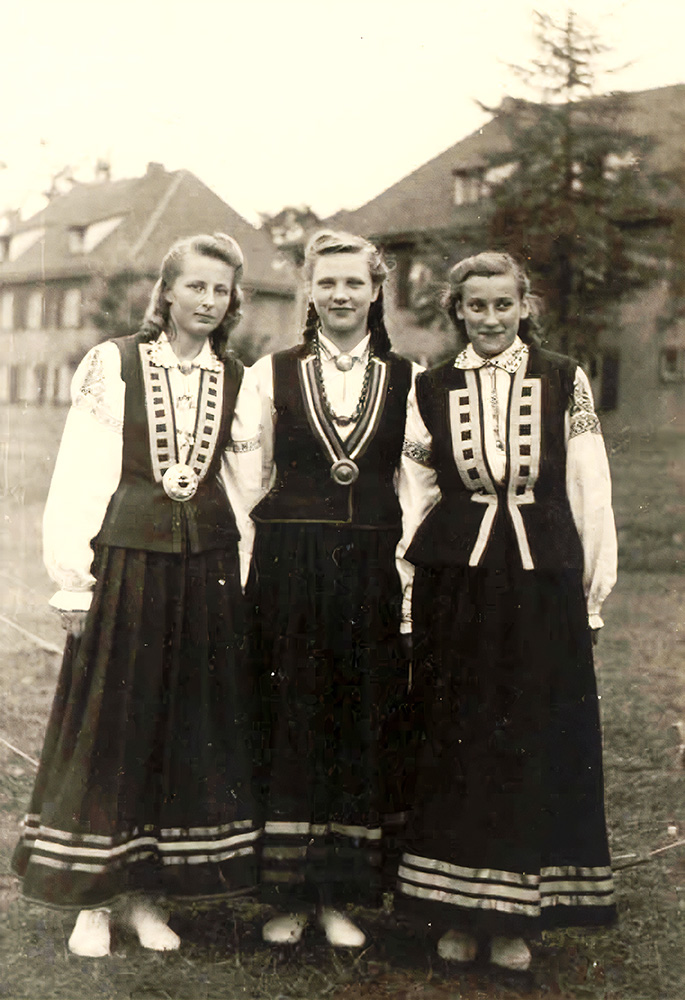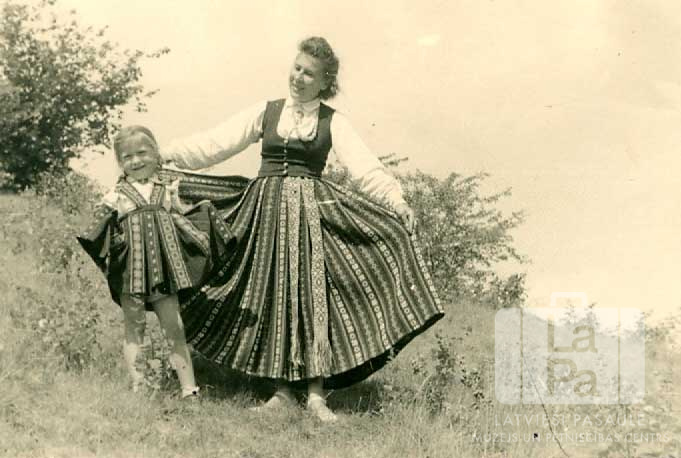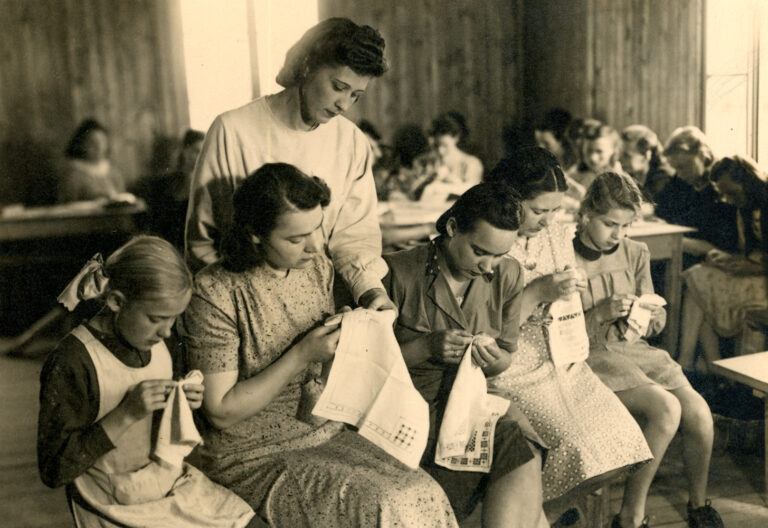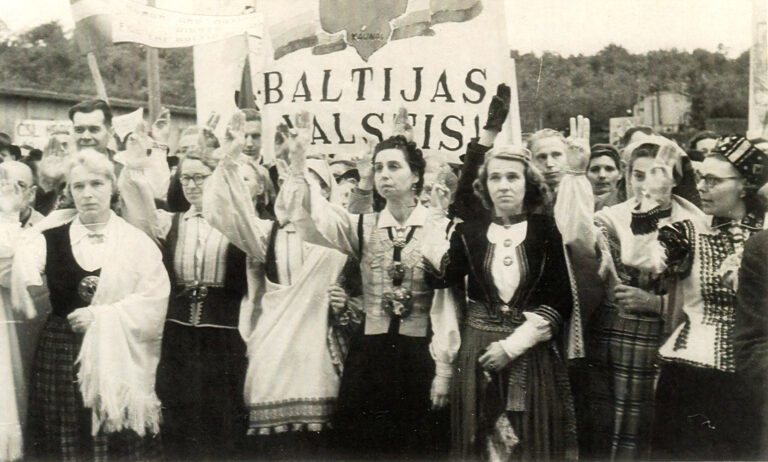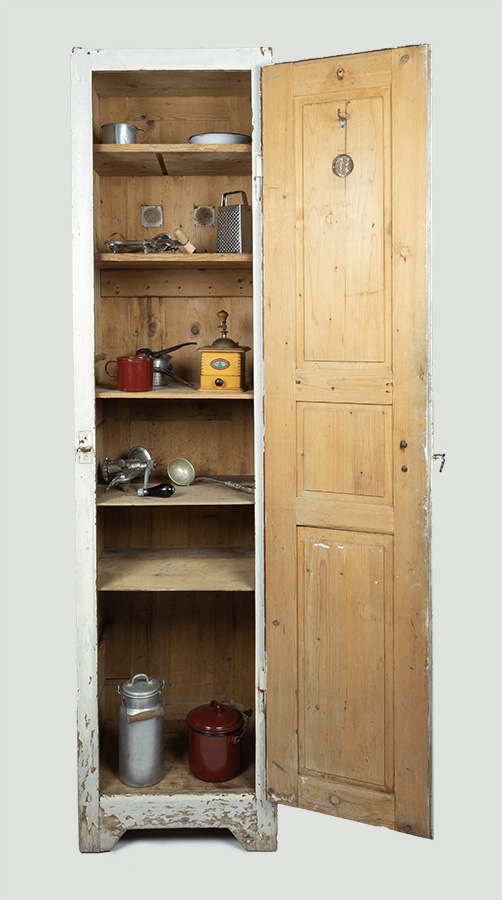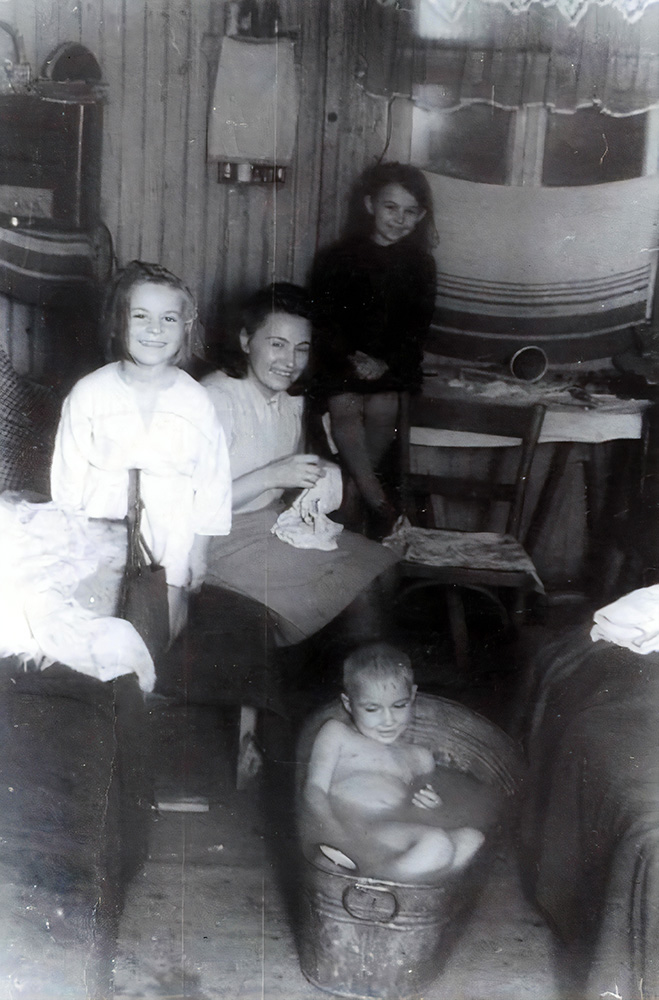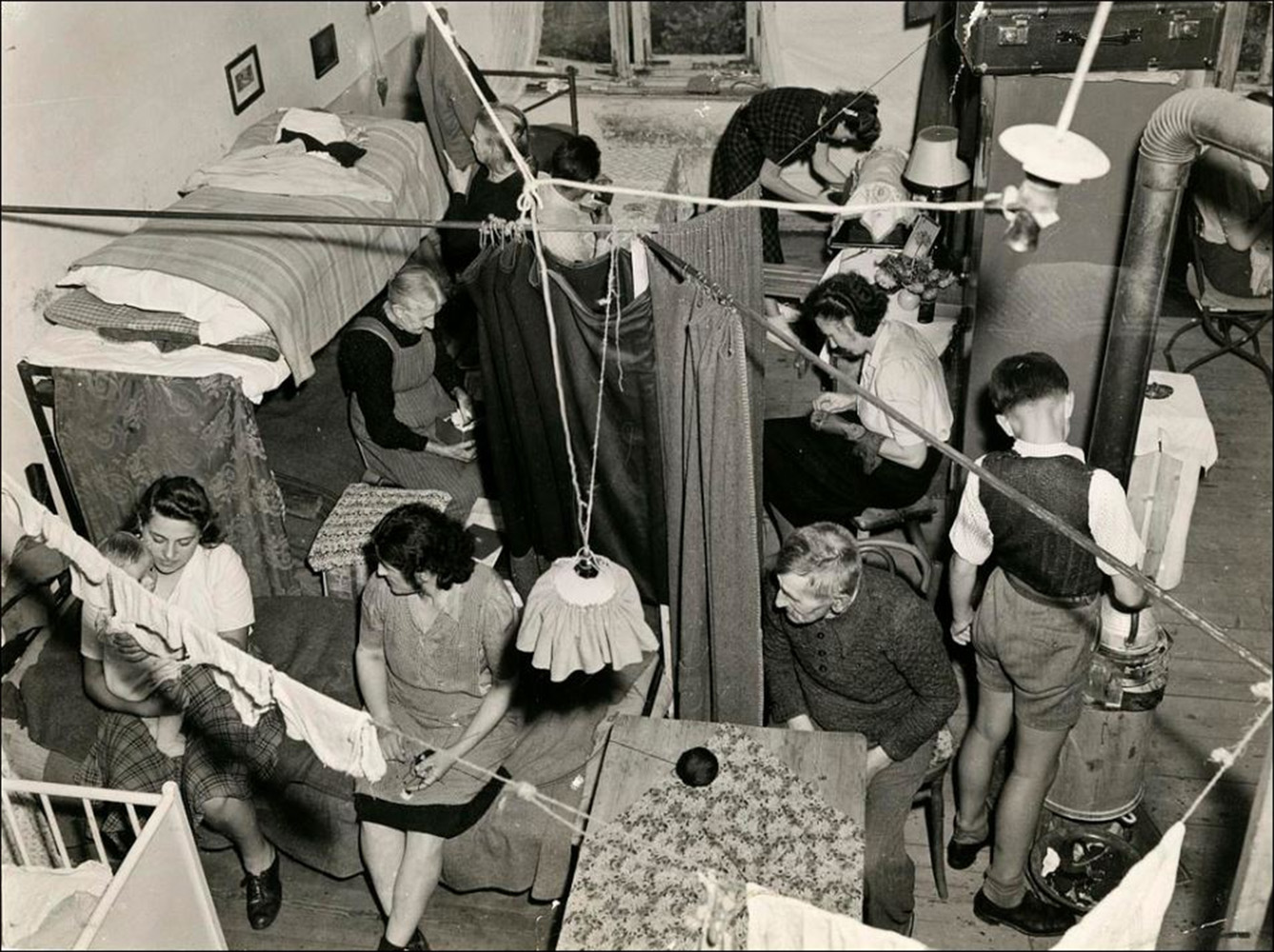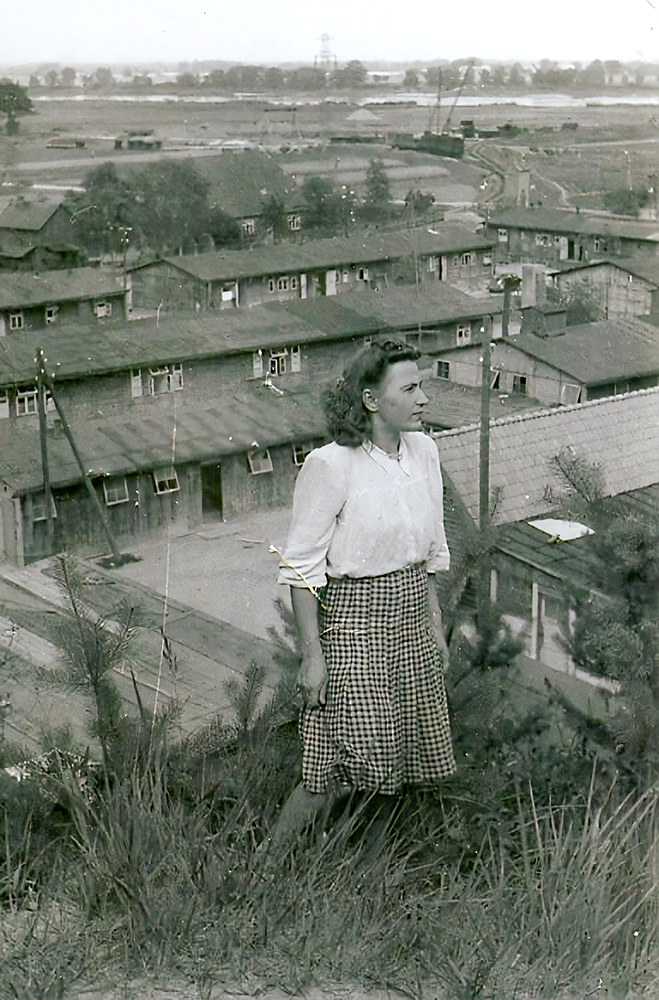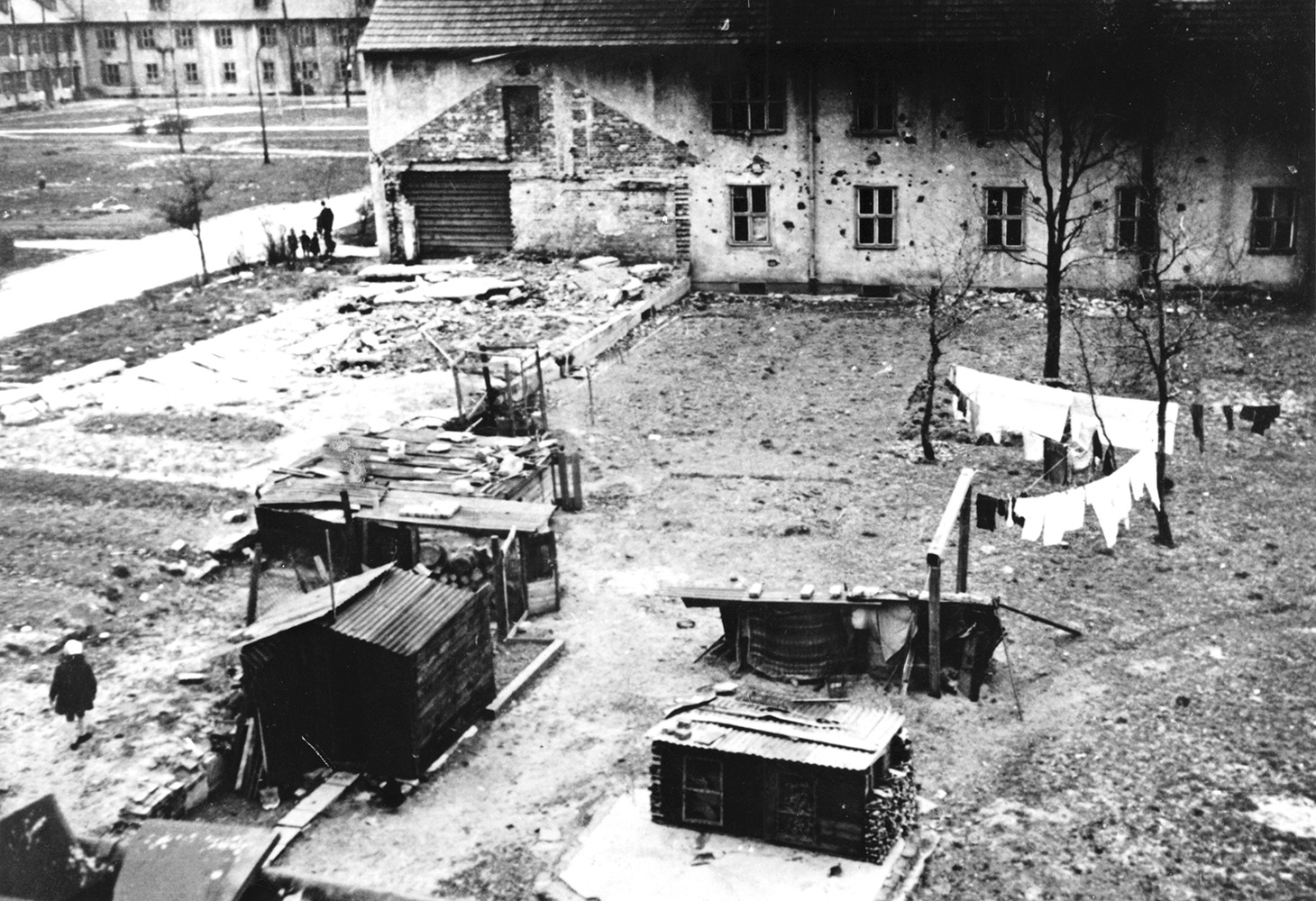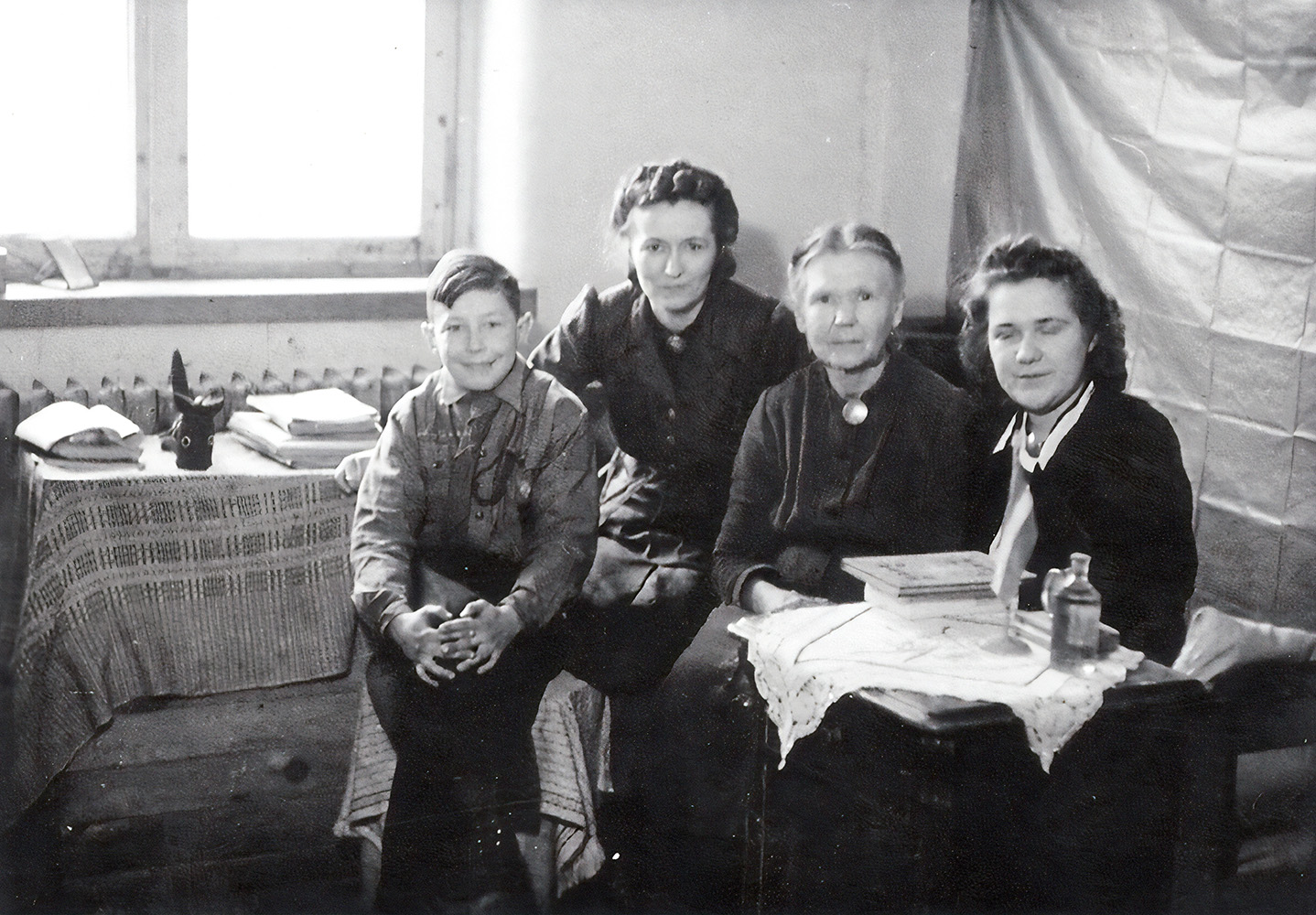Home > In Refugee Camps
Folk costumes in displaced persons camps
Refugee camps – little Latvias
At the end of WWII, having left their homes under the fire of war and risking their lives, approximately 180 000 Latvians sought refuge in German-controlled territories to the west.
The United Nations Relief and Rehabilitation Administration (UNRRA) was founded in 1943. In 1947 the International Refugee Organisation (IR) took over the functions of UNRRA and established Displaced Persons (DP) Camps to house the refugees who could not return home to their now illegally occupied countries.
Latvians were scattered throughout a total of 294 refugee camps located in post-war Germany, Austria and Denmark.
Despite the poor conditions, with meager food and cramped barracks, the refugees organised and participated in various cultural, educational and political activities in the refugee camps. Almost every camp transformed into a so-called “Little Latvia”: with its own primary and/or secondary school, theatre troupe, choir, folk dance ensemble, and various other activities that maintained Latvian culture and community.

